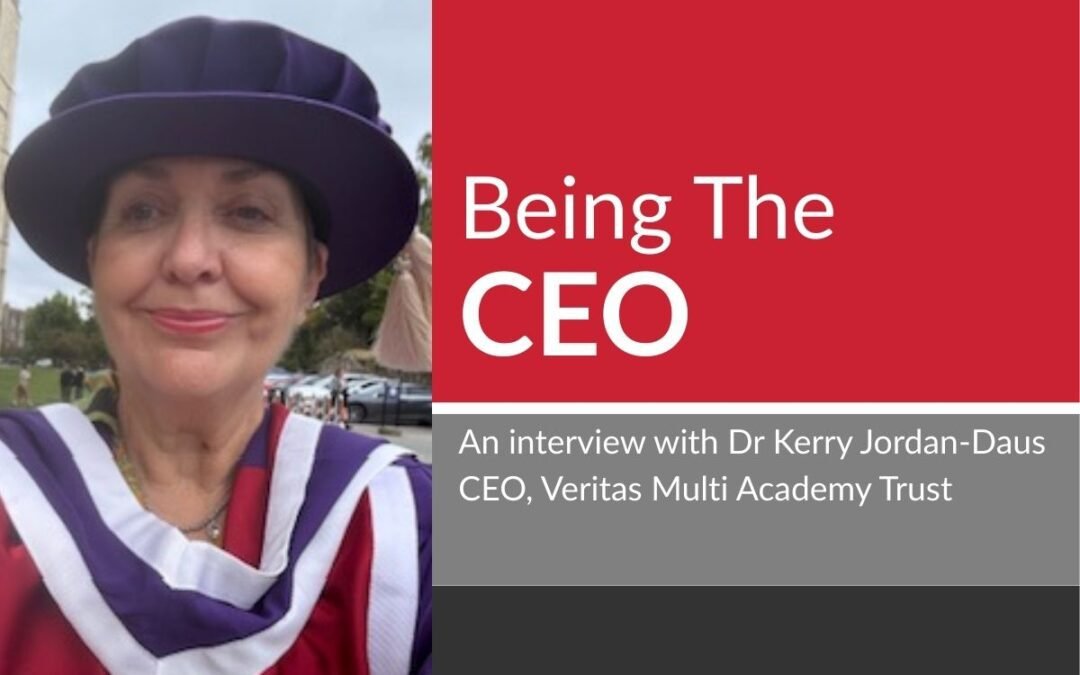
This month’s edition of Sir Steve’s blog is being made freely available, beyond our memberships, as he reflects on the life and leadership lessons of Her Majesty The Queen, and shares his take on last week’s Forum Strategy #TrustLeaders roundtable event on the cost pressures crisis. Sir Steve is the Chair of Forum Strategy’s National #TrustLeaders CEO network.
Little did we know, that when those of us attending the Forum Strategy #TrustLeaders roundtable event on Wednesday were discussing the pressures on schools and Trusts and the challenges of operating in an uncertain, volatile world, that that world was about to become even more unsettled with the death of Her Majesty, the Queen. In the short term at least. We don’t know what, if any, direct impact it will have on our professional or personal lives longer term but it has given us some immediate challenges; such as an extra school closure day, and a decision about how to approach it with our pupils, colleagues and staff to comfort (because if your experience is the same as mine, the strength of feeling and depth of sorrow this has caused has caught us all a little by surprise).
For us as CEOs and leaders, these are all quite manageable of course, and when this very sad event has passed, the same professional challenges we discussed at the roundtable event are still with us. I’ll come onto some thoughts on this a little later. First, with your indulgence, I’d like to pay my own respects to Her Majesty by sharing my thoughts on part of her legacy that I hope isn’t overlooked and that is: she gave us a masterclass in brilliant leadership. Here’s a few thoughts as to why. (I do want to acknowledge that views on the monarchy can divide people, and I offer the below as an observation of leadership, and nothing else.)
Firstly, I believe she was the embodiment of servant leadership. I think she understood that she was there for the people, not the other way round. Her biographer described her as having an ‘almost a crippling sense of duty’ and I think this manifested itself in many ways. Firstly, in the sheer number of commitments she undertook throughout her life, and right up to the last few days of her life. Secondly in the number of patronages to charities and public sector organisations she gave, the commensurate way she undertook royal duties and even, symbolic as it may be, joining the auxiliary territorial services as a driver and mechanic.
All this adds up to someone who understands that others come first and the really important question is ‘what can I do for you?’. In terms of personal characteristics, I think this servant leadership quality was shown in her curiosity for people and things, her empathy, her ability to listen and ask questions and her commitment to the national community. My favourite respectful cartoon of The Queen this week was a picture of her with a tartan skirt, handbag, corgis at side, standing at the feet of an enormous elderly figure shrouded in white at the pearly gates and her asking, ‘and what do you do?’
“How often have we talked about the need for leaders to be that strong, immovable, confidence giving figure? I can’t think of a better role model.”
Secondly, she showed great strength in the face of adversity; she was that immutable rock on which the waves crashed and broke. Whatever our views on the monarchy and her as Queen, as a leader she faced some pretty formidable and turbulent international and national events; from the war, to JFKs assassination, the moon landing, 9/11, Brexit, the Covid pandemic and of course, family tragedies. Throughout it all, she seems to me to have had an immutable strength of character, a calmness and stoicism, a determination to ‘get through’ things. In her own words, ‘when life seems hard, the courageous do not lie down and accept defeat, they are all the more determined to struggle for a better future.’ Many people are recognising that she has been a constant in our lives and what a good thing this has been. How often have we talked about the need for the leaders to be that strong, immovable, confidence giving figure? I can’t think of a better role model for these characteristics.
One of those ‘make or break’ characteristics in great leaders for me is personal authenticity, particularly when it comes to values and how an individual’s actions match up with these. I talked in my last blog about how credibility is easily lost when there’s a mismatch – think party gate. One of the most powerful images of the last couple of years is The Queen sat alone, in mourning, at her husband’s funeral. Following the law, not abusing her power or position but doing the right thing. Of course, people will say she had to; everyone was watching her. But, my favourite definition of integrity being ‘doing the right thing even when no one is looking’, my belief is cameras aside, she would have done the same thing because I believe she had a strong moral code. Why do I think this? Because over time and in different contexts her actions were consistent and she did what she said she believed in: her duties as monarch, hard work, leading by example.
“my favourite definition of integrity being ‘doing the right thing even when no one is looking’ ”
Next, The Queen embraced change, recognising that it is inevitable and that strong leaders do embrace it, seeing it not as an obstacle but an opportunity for growth and development. In her own words, ‘I have lived long enough to know that things never remain quite the same for very long’. The world has changed beyond recognition since her coronation and there are some great examples of how she has kept up with these shifts, from her first battle with Winston Churchill over breaking with tradition and televising her coronation rather than having it covered on radio, (‘I need to be seen to be believed’) to reportedly being the first Head of State to send an email in 1976, and more recently the modernisation of the monarchy.
Finally, I hope this will make you smile, I suspect The Queen has been pretty good at succession planning. Of course, she hasn’t had the tricky task of interviewing and selecting her successor and there isn’t a Board of Trustees to answer to for this. More, the British public, in time. But from watching both King Charles and Prince William and their talk of modernising the monarchy, and of the need to be ever more in touch and responsive with the British public, I suspect she has been doing what every great leader does; preparing for the future when they are no longer there.
My own personal experience of meeting the Queen was a very special day for my family and I, and I was left in awe of her absolute professionalism, her warmth, her ability to make one feel individually important, even amongst a multitude of people, and that most important leadership trait, (self-deprecating) humour. In my conversation with her about my CEO role she had clearly been well briefed and commented ‘I understand you run 52 schools, (correct at the time), you can’t possibly do all that yourself. I suppose you’re rather like me and have other people to do most of the hard work!’ Indeed Ma’am. R.I.P.
Part two
The theme of this blog was originally to be about strategic planning, setting long-term goals etc. That was before a whole load of issues landed at your doorsteps manifesting into some really pressing issues in the here and now. I was really pleased, therefore, that we were able to hold the round table event last week to be responsive to the challenges you’re facing. In very brief summary for those who haven’t seen the paper or couldn’t attend, the issues centred on the rising costs of energy, the need for a fair price cap, and the difficulties associated with grants. The pay rises for teaching and support staff, the ridiculously late notice of this and how they are to be funded, the generally dire condition of school estates and the challenge of making them efficient and sustainable, and the real feeling that there isn’t – at present – a meaningful dialogue with central government on these issues. On a more macro level our school communities are faced with a cost-of-living crisis and the associated impact this has on well-being and health. At Forum Strategy, as a first step, we have turned this into a paper and made representation with it to central government.
“it’s clear that as trust leaders you are being creative and rigorous in trying to solve these issues.”
In listening to the comments and observations of our networks, it’s clear that as trust leaders you are being creative and rigorous in trying to solve these issues. As I reflect on the conversations, some general observations occur about what I think is important right now.
My first observation picks upon a theme I highlighted earlier; the importance of the ultimate leader (CEO) in being the rock of the organisation, bringing confidence, finding the path forward and keeping things in perspective. What really struck me from peoples’ comments was the pragmatic way these challenges are being faced and the lack of panic. Spot on. There’s a moment in one of the Harry Potter books where Harry produces a really powerful spell and he is able to produce it because, through a trick of time, he has done it before, and this gives him confidence to do it again and even better. Same here, we have faced equally difficult challenges, found solutions and we will again. Some of them will be of our own making, some government led (stepping in with a six-month solution is inadequate but there will be more, I’m convinced of it) and some problems will just resolve themselves; they do that sometimes.
Our job as CEOs is to weather this, do the best we can and focus on making sure our people are OK. They will be looking to us and need that confidence and reassurance we can bring. One of the advantages of being a long in the tooth CEO is understanding that history repeats itself, that governments need schools open and that when there’s a lot of noise in the system, solutions are found. I think we are at that point which is why representing these sector issues as we have just done is really important.
“this is going to mean tough decisions and new ways of doing things, but I think we are in a position of needs must.”
I have also got to be real about this however. There isn’t going to be a magic money tree that solves all our fiscal problems and there are some things incumbent on us. One of those is in securing optimal organisational efficiency and best use of resources at the same time as making best use of partnerships and both formal and informal working arrangements with other organisations. It was heartening to hear just how many leaders in our network are already doing this but one challenge I would like to pose is how often we really evaluate how efficient our current structures, processes, resource allocation, ways of doing things etc. are and how often we default to historic assumptions or working practices. In such a fiscally challenged context, and in such a volatile environment, there’s an argument that we now need to think more about zero based budgeting where all expenditure is evaluated and needs to be justified so that, as well as optimising revenue, we optimise costs. In some cases, this is going to mean tough decisions and new ways of doing things, but I think we are in a position of needs must.
On a similar note, there’s a thistle to be grasped for some CEOs and that is in ensuring that the fiscal benefits of being in a MAT are fully realised. I find that in many MATS there is a strong culture of collaboration around teaching and learning, professional development, curriculum etc. However, still, many have not moved to pooled funding, centralised procurement, rationalised and shared staffing structures. The argument against this is often centred on loss of autonomy, loss of identity for individual schools and other cultural issues. The reality is, in this climate, in terms of securing maximum economies of scale and least financial and resource (human and other) duplication, and therefore best value for money, these ‘internal’ resourcing arrangements do need to be considered to ensure that the MAT secures best value and is optimally efficient. It’s the area I support with most when mentoring CEOs, because it’s a thorny one.
“the days of a guaranteed steady state are gone and that we need to look at strategic planning in a different way.”
Given that this blog was to be about strategic planning, I’d like to make a brief observation on it, because it’s pertinent to the issue of dealing with volatile and challenging contexts. In looking back at my attempts at planning over the last ten years as CEO, I find I have written three five-year plans, a 2-year plan and a number of annual plans. Yep, the maths doesn’t work, so either I can’t add up or my long-term plans never fully came to fruition. It’s the latter of course. To me this signals that the days of a guaranteed steady state are gone and that we need to look at strategic planning in a different way. Historically, in drafting our strategies we have all pretty much followed a similar process and model. Think about a future state, define a multi-year plan to achieve that future state, call upon the organisation to execute a plan, monitor performance to keep everyone on track, and evaluate success. I wonder how many of us this has worked for over the last few years?
In these turbulent times I think it is time to reconsider what good strategy looks like and to start to think of strategy making as a continuous process that generates a living, dynamic plan that is able to be responsive to changing conditions and events. Many business organisations have moved to this model and I think it has interesting implications for us. In this there is a recognition that long term aspirations need to be set (and left alone) but that the real focus should be on actions that close the gap between the reality now and longer-term ambitions and this should be evaluated again when the new reality exists and when each set of actions has been taken. In this process, monitoring doesn’t ask the question ‘how are we performing?’, rather, ‘do we need to alter course?’ in order to achieve longer term ambitions. It’s a subtle difference and recognises that there is a constant state of flux, and more flexible strategies will be required with more agile and less fixed strategy making.
My final observation is around the resonance between what organisations prioritise in times of turbulence and what the communities they serve are experiencing and need, for if we are truly to serve then they should be in accord. The one big mistake I always thought the Queen made was in being too late in responding in a way the country needed to the death of the Princess of Wales. It’s notable that when she did alter her course and respond differently, she later talked of mistakes in leadership and lessons to be learned (something a great leader is able to do). As a result of listening and responding, however, her position as a great leader was further consolidated, I believe. Now, of course, I’m not suggesting that we are in a similar position right now but many communities are under strain and peoples’ lives are becoming increasingly difficult. We are perfectly placed to respond positively to this and be a force for good by doing our very best for the people we have a responsibility to and in the way they need. We can only do this if we prioritise the right things and as we start this new school year and start to roll out our plans my advice would be to listen to those we serve and respond.
Sir Steve will be giving the keynote speech at the Annual National TrustLeaders CEO Conference on 22nd September 2022 – which takes place in Nottingham.


